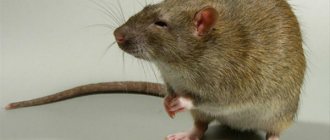Human food
Just because a food is good for us doesn't mean it's safe for dogs. Chocolate contains large amounts of caffeine and theobromine, which dogs do not tolerate very well. This can lead to various disorders ranging from gastrointestinal, heart, blood pressure disorders and several others. All other things being equal, dark chocolate is more toxic. The toxic dose is calculated using the dog's weight, the type of chocolate, and the amount of chocolate the dog ingested. Be sure to contact your veterinarian and tell him this information so that he can advise you on what steps to take. It is often recommended to induce vomiting if food has been eaten within the last two hours. If poisoning is severe, your dog should be hospitalized and placed on a drip. Chocolate is generally the most common cause of poisoning, but there are others.
Grapes and raisins can cause acute kidney failure; macadamia nuts can lead to gastrointestinal upset, tremors and weakness. Avocado can cause vomiting and diarrhea. Sugar-free gum contains xylitol, which can cause dangerously low blood sugar. Signs of low blood sugar include weakness, loss of coordination, tremors and seizures. Because human food is generally fattier and spicier, dogs that overeat regular human food tend to suffer from gastrointestinal distress, which in severe cases leads to inflammation of the pancreas. Never allow your dog to eat your regular food, and always inform your friends and guests about this!
Doghunters. What do they poison dogs with?
Wild dogs
Abandoned dogs and wild packs in residential areas are a hot topic for any large city. People, deprived of everything human, throw away pets, get them and abandon them on a whim. And not a single such subhuman will think: where will his dog go? Abandoned dogs, as expected by instinct, create packs.
Quite quickly they run wild, and humans become a mortal enemy. You can’t blame them for this: the person betrayed loyalty, sold love. Another reason is the carelessness of people .
We get a puppy and don’t think that in a year we will not have a child, but an adult female or male with full-fledged sexual instinct.
Cuddles appear and the “kind” owner throws them in the trash like banana skins!
Angry tramps are dangerous to others.
But this scourge has a more serious problem - the threat from such swarms to ordinary people. These are carriers of various diseases and infections, including rabies . It is impossible to count how many people suffer from such swarms every day. In some cities, the percentage of such dogs is so high that it is impossible to walk alone.
Unfortunately, sometimes packs attack people and kill them. This is a war where there is no winner and no aggressor. This is a vicious circle created by man himself, that is, by us. You, reading the article, are not to blame; perhaps you have never given up and even help homeless animals.
But now you are going home and a ferocious pack with a leader is blocking the road.
Reluctantly and studiously ignoring pity, we make a cruel decision: to exterminate the danger , otherwise tomorrow they may tear up the cats, kill a child or you. And so those who madly love all furry four-legged animals, but are afraid for their lives, have to prepare poison for such dogs.
We must remember: the law punishes inhumane murder. Maintain your humanity! We will tell you how poisons work and how you can poison formidable dogs. But choose the method where the dog will experience less pain. Remember that you are only eliminating danger, not settling scores.
Every dog is innocent , it just found itself in such conditions when it began to pose a threat.
What is used to poison stray dogs? Main poisons
Before calling a special dog hunter service, think: is this a good solution? The point is that these knackers often poison the wrong dogs. 90% of ordinary yard or domestic pets fall under their attack, which do not harm anyone.
Most of the victims of dog hunters are harmless animals.
Aggressive flocks rarely settle in or around people's yards. They roam around the city and must be tracked down. They are smart, they won’t trust a person, you will have to think about how to catch them with poisoned minced meat. That is, poisoning dangerous dogs requires work and attention.
Dog hunters will not do this! After each visit, veterinary clinics in any city are filled with sick and poisoned pets.
The dog ran ahead of its owner, sweet and kind, but with a “vacuum cleaner” personality, and ate the poison. Dozens of cats die after such raids.
And most importantly: no one cleans up the corpses! You, dear residents, will have to do this! The result: danger is on the spot, a sea of innocent corpses and sin on the conscience.
Dogs do not tolerate any medicine well, so the main method of poisoning is based on taking certain medications. The most commonly used drug is isoniazid and its derivatives. The medicine is anti-tuberculosis, but is a lethal poison for dogs.
Not everywhere you can buy it just like that; often it is available only in the dispensary itself. But in big cities this is not a problem, since the drug is not a narcotic and is not considered poisonous. Keep in mind that it takes almost 10 hours for the dog to die: it’s painful and scary. To kill one dog up to 10 kg you only need 1 tablet/kg.
For larger dogs - 2 pieces/kg.
Metoclopramide is an anti-nausea tablet, but is lethal to any dog. One tablet causes severe poisoning, paralyzes breathing and provokes severe convulsions.
But the dog dies only after a couple of days. To reduce the time, you can mix the drug with Tubazid.
All poisons are mixed with minced meat, and then it is placed in the habitats of dangerous packs.
Death from poisoning is usually painful.
A more humane method, in which the dog will die slowly (up to 10 days), but there will be no suffering: the use of long-term killing with a poison such as Digitalis (digitalis).
The drug Atropine destroys the psyche in a matter of hours. A loading dose of 2 t/kg will kill a dog in 3-5 hours. Arsenic can also poison dogs if added to the same minced meat. Arsenic acts quickly: from half an hour to two.
How to prepare poison for dogs yourself
Poisoning dogs in the yard is not recommended! Pets walk in the courtyards, children play, and with their little hands they can find anything and put it in their mouths. In addition, the remains of poisons retain their activity for a long time. You can poison dogs on the street and outside the yard with your own recipe.
The most powerful poison is cyanide. But you can’t buy it easily, so try making it yourself. This will save the animal from physical suffering, and you from moral suffering, since death will be almost instantaneous.
You can use a steam bath or a regular microwave to make a large condensate and evaporate the vapors of ordinary glue. That is, the glue gives off vapors, forms drops, and you collect them. Not easy.
It's easier to buy regular rodent poison.
Rodenticides (poisons for rodents)
Mice and rat bait is made to be palatable to them, but unfortunately, a dog may find the bait edible for the same reason. Until now, many such baits are made on the basis of an anticoagulant, which blocks vitamin K and leads to massive internal bleeding and death of any rodent. Dogs experience the same bleeding, but because dogs are larger, without treatment, death usually occurs after 3-5 days. If your dog has recently ingested poison, induce vomiting as soon as possible and seek veterinary attention. Your veterinarian will give your dog vitamin K and you will need to monitor him for lethargy, weakness, and loss of appetite for 2-3 weeks. If you notice any of these symptoms, contact your veterinarian immediately. In exceptional cases, the dog may require a blood transfusion.
However, there are other types of baits. Cholecalciferol-based baits increase the level of calcium and phosphorus in a dog's blood, causing kidney damage. The dog will require urgent hospitalization and an IV to reduce calcium and phosphorus. There is another poison, bromethalin, which affects the brain. The dog experiences tremors and seizures, and eventually death. Of the three types of poisons, this is the most dangerous and difficult to treat. Therefore, if you have any rodent problems, only use anticoagulant-based rodenticides as they are the least toxic and easiest to treat. Place the bait in an area where your dog cannot get into it, and check the bait once or twice a day. If the rodent problem is resolved, dispose of the baits properly. If you spot dog tracks on the bait, seek veterinary help immediately.
Do not throw away the poison package and, if necessary, bring it with you to the veterinarian. With the help of this package, the doctor will be able to determine the type of poison and prescribe the appropriate treatment, since, unfortunately, there are cases when the doctor prescribes the wrong treatment due to the lack of all the necessary information.
Symptoms of Dog Poisoning
When taking Isoniazid and its derivatives, symptoms appear within two hours. The dog loses orientation, sways, and stops responding to its surroundings. Hallucinations, severe vomiting, excessive drooling. Severe convulsions are almost always present. The dog becomes inadequate, sometimes aggressive due to confusion.
At the first symptoms of poisoning, immediately contact a veterinarian! .
If a dog came under a raid by dog hunters and could eat poison, the chances of survival are low. Until the signs appear, until the owner realizes what’s wrong with the dog, it will be too late to save. Therefore, we always keep vitamin B6 (Pyridoxine) nearby. For large dogs, 3-5 ampoules should be used, ideally intravenously. For pets less than 12 kg, 2-3 ampoules are enough. Don’t be afraid, even if it’s not poisoning or some other poison, it will only get better. Only this will allow you to survive until the help of a doctor .
Dogs with poisoning, if it is minor, are lethargic and sleepy. There may be vomiting, its strength depends on the dose. So, the first signs of poisoning:
- confusion, “blackout”;
- unsteady gait, loss of coordination;
- salivation in large volumes;
- profuse nausea and obligatory vomiting;
- convulsions (not always).
Someone will definitely say: the author is a flayer and a sadist. Indeed, poisoning dogs is inhumane, but what to do if some individuals become a threat to human life? Don't forget that some of them have rabies. It is transmitted to humans and anyone can die. We do not urge and even want to warn against such a measure. Think before you do this. And if this is unavoidable, make sure that the innocent do not suffer.
Insecticides (bug repellents)
The most common insecticide that dogs ingest is cockroach killer. They contain an attractant that is similar to peanut butter and which attracts dogs. Fortunately, the insecticides used today are practically non-toxic to mammals or their dosage in baits is very small. However, there is another danger, namely the container of poison, since the dog can swallow it whole. Therefore, when placing poison, you need to follow the same rules as in the case of rodenticides.
Medicines
This category includes various drugs intended for use in humans. Ibuprofen and paracetamol are poisonous to your dog and you should never give them to your dog. Keep all your pills out of your dog's reach. Various bottles and mixtures may not be accessible to children, however, many of them remain accessible to the dog. If possible, take the pills in the bathroom with the door closed so that if you accidentally drop the pill, your dog won't be able to catch it and swallow it. If your dog ingests a tablet or shows signs of poisoning, contact your veterinarian immediately and give him details of the ingested medication so he can determine the next steps you will need to take.
Poisonous agents. Review
Isoniazid and Tubazid.
- The first option, Isoniazid, is very useful and important for life: it is used to treat tuberculosis in humans. It is highly effective. For animals it is a strong poison, resulting in a gag reflex, suffocation and death from hypoxia.
- The second is Tubazid, an analogue of Isoniazid.
Symptoms of intoxication of the body can appear in a period from forty minutes to five hours. Drowsiness and apathy sets in. This is a rapidly progressing stage, it is advised to carry out gastric lavage as soon as possible! This is followed by movement coordination disorder. Noticeably foamy salivation and bloody vomiting. The end is marked by convulsions, oblivion and coma. No amount of therapy will save the animal.
Mortality will follow within three hours from the onset of symptoms.
First aid:
- - rapid gastric lavage with saline or soda solution.
- - the dog is given a large amount of adsorbent preparations - activated carbon, Polysorb, Enterosgel, Smecta. Overdose in this case does not threaten. Once every three hours will be enough.
Atropine
It is not a poison, but it has a strong effect, and its self-administration is dangerous. It’s interesting that sometimes atropine is used as an antidote against other poisonings.
Symptoms:
- - sudden enlargement of the pupil and lack of reaction to light.
- - sudden increase in heart rate.
- - Increase in general body temperature.
- — Dryness of the mucous membranes – stickiness and rubberiness.
- - cerebellar disorder - the dog shakes when walking, there may be aggressiveness or apathy. Convulsions, fainting and death.
Therapy:
- - rapid gastric lavage with a weak solution of manganese. Injection of one ml of a half percent solution of proserin under the skin.
Convulsions are localized by means of barbiturates (up to five milliliters into a vein).
Digitalis or foxglove
A very strong substance, a small overdose leads to complications. Instant convulsions or paralysis, coordination disorders. Failure in cardiovascular functioning and even its stop. Possible gag reflexes and diarrhea.
Therapy:
- - rapid gastric lavage with a large volume of liquid or saline solution.
- Give your dog twenty to thirty tablets of activated carbon every hour. A doctor's consultation is required.
Cyanide A is not a drug
Toxin for animals and people. After a certain number of minutes the following will follow:
- - shortness of breath, mouth smells of bitter almonds. A visit to a veterinary institution is needed as soon as possible.
- - ataxia, the dog moves from side to side.
- - depression. Death coma, convulsions and mortality.
If time is lost, the dog cannot be saved.
There is only one chance of salvation - inhalation with amyl nitrite. Approximately five milliliters of a ten percent solution of sodium nitrite plus fifty milliliters of sodium thiosulfate (twenty-five percent solution) are injected intravenously.
Death occurs very quickly. Cyanides are dangerous even when released into the air; for this reason, dog hunters do not use them.
Rat poison
This toxic substance is in demand among dog hunters. His pricing policy is affordable. Contains zoocoumarin. Blocks the hematopoietic filtration mechanism.
Symptoms:
- - unexpected weakness, powerful tremors in the muscles.
- - shortness of breath, unexpected pallor of all visible mucous membranes.
- - cough, bloody excrement.
- - severe pain when palpating the abdomen.
Therapy:
- - rapid gastric lavage with a weak solution of manganese.
- — it is allowed to use Enterosgel or Smecta, but activated carbon is prohibited!
- - YOU CAN'T DRINK!
- - a significant dosage of vitamin K (phyllochenone) intravenously.
Important! You should not try to save your pet at home! Go to the hospital immediately!
Veterinary medicinal products
Many tablets that veterinarians prescribe for dogs have a pleasant taste, causing dogs to consider them a treat. It is important that all your dog's medications are kept in a safe place. If you're giving your dog medication, make sure you know the exact dosage and schedule, so before you leave your veterinarian's office, be sure to ask your veterinarian these questions. Never use flea and tick products for dogs on your cats, as these products for dogs and cats are fundamentally different.
Dosage for dogs
In each specific case, the dose and course of treatment are determined by the veterinarian individually, depending on the diagnosis, severity of the disease and body weight of the animal. Do not disregard the recommendations of your veterinarian for safety reasons.
| Purpose of use | Treatment plan |
| as a preventive measure | 0.11 – 0.39 mg/kg. orally or intramuscular injection every 6 hours |
| for the treatment of gastric motility disorders | 0.22 - 0.39 mg/kg. orally every 8 hours |
| to improve bladder contractility | 0.22 - 0.48 mg/kg. orally every 8 hours |
When treating gastric motility disorders, the medicine should be prescribed 30 minutes before meals. In case of severe vomiting, the drug is administered only intramuscularly, since tablets are ineffective in this case.
Example:
a 4.5 kg dog is given 1 mg every 6 hours as a prophylactic against vomiting or every 8 hours to treat motility disorders.
Various chemicals
Antifreeze is very sweet and attracts many dogs. After consuming even a small amount of antifreeze, the dog becomes very drunk. However, after a few hours the dog will be sober and quite normal, but after a few days he will definitely experience kidney failure. The toxic component in antifreeze is ethylene glycol. There is an antidote for it, but it must be used immediately after consuming antifreeze, so if you suspect your dog has consumed it, seek veterinary attention immediately. Antifreeze based on propylene glycol is much less toxic, so if possible, buy it. Besides antifreeze, there are many other chemicals that pose a risk to all pets. These are substances such as paints, paint thinners, and pool chemicals. If a product is labeled as “poisonous,” be aware that it is also poisonous to animals and keep such products out of reach.
Be proactive and have an emergency first aid kit ready for your dog. In addition to the basic supplies that should be in the first aid kit, do not forget to put in it a 3% solution of hydrogen peroxide and a small syringe, with which you can induce vomiting in the dog. Also, do not forget to add saline solution to rinse the animal's eyes if necessary. And of course, always have your veterinarian's number and emergency medical number handy.
And remember that prevention is the best cure!
Isoniazid: instructions for use for dogs
When treating with any medications, you must carefully study the description of the drug and strictly follow the recommendations in the annotation; exceeding the dosage can result in poisoning or death.
To rid animals of tuberculosis, Isoniazid is often prescribed - the instructions for use for dogs contain all the necessary information about the rules of safe and effective therapy.
But knackers use this product to bait animals, so owners need to know how to help their pet in such cases.
Composition and what it helps with
Isoniazid (Tubazid) is an effective but very toxic antimicrobial drug that helps with various forms of tuberculosis and is used in the treatment of humans and animals. Produced in light-colored tablets, the drug has a low cost, it can be purchased at a pharmacy without a prescription, the average price is 30–50 rubles.
The medicine contains 0.1, 0.2, 0.3 g of isoniazid, according to the instructions for use, this substance quickly destroys intracellular and extracellular types of mycobacteria - the causative agent of tuberculosis, but is ineffective against other pathogenic microorganisms.
If the Isoniazid tablet gets wet, red or pink stains will form around it - this feature will help the owner quickly determine the type of poison.
Effect on the dog
Isoniazid is safe for humans and many other animals, helps to quickly cope with a serious illness, and even with an overdose it is not difficult to eliminate the negative consequences. But for dogs, this drug is poison, since their bodies do not synthesize substances that break down isoniazid.
When a large dose of anti-tuberculosis drug accumulates or is simultaneously taken in the dog’s body, the amount of pyridoxine sharply decreases, blood circulation slows down, brain hypoxia, convulsions, hypoglycemic coma develops, the body stops functioning, and death occurs.
An animal can be poisoned by Isoniazid while walking, or at home if there is a person in the family who takes an anti-tuberculosis drug.
Dangerous dosage
The lethal dose of Isoniazid for dogs is 0.05 g/kg; for small dogs and puppies it is enough to swallow 1 tablet. For poisoning to occur in an adult large dog - more than 5 pieces.
An animal cannot swallow such a dose by accident; the poison is mixed into tasty baits by dog hunters who position themselves as fighters against stray animals; they use various methods and techniques to bait dogs.
In addition to Isoniazid, analogues of the drug - Fthisopyram, Hixoside - are also deadly for dogs.
The drug Isoniazid does not have a pronounced taste or smell, so dogs eat the poison without fear. Dog hunters often mix anti-tuberculosis drugs with antiemetic drugs, which significantly increases the likelihood of developing severe consequences.
Signs of poisoning
The main danger of the drug is its immediate effect; signs of intoxication appear in the dog within 20–40 minutes; in case of severe poisoning, death occurs after 3–4 hours.
Symptoms of poisoning:
- increased salivation, lacrimation, foam at the mouth;
- lack of coordination, unsteady gait, weakness in the limbs, the dog begins to fall to one side when walking - deviations are caused by the destructive effect of the drug on the cerebellum;
- convulsions, muscle twitching, epileptic attack, the animal’s head is thrown back and its paws are stretched out - the seizure lasts no more than 20 seconds, involuntary urination and fecal incontinence are often observed;
- confusion, drowsiness, sometimes panic or stupor is observed in the animal - signs indicate serious disturbances in the functioning of the central nervous system;
- vomiting, the masses contain blood, mucus, particles of undigested food;
- rapid breathing, shortness of breath.
If you do not provide timely assistance to your pet, it falls into a coma, and death soon occurs; the mortality rate from this poison among dogs is 100%. Upon autopsy, a large amount of the drug is found in the animal’s liver.
In addition to Isoniazid, dog hunters poison dogs with Digitalis, the antiemetic drug Metoclopramide, Atropine, and arsenic-based drugs. Death in animals occurs after a few hours, but sometimes the suffering of the animal continues for 3-10 days.
Providing first aid for poisoning
Emergency assistance begins with cleansing the stomach, provided that the dog is conscious and does not have a convulsive syndrome - prepare a solution of 200 ml of warm water and 15 g of salt or soda, use a syringe without a needle to inject all the liquid into the animal’s mouth. To induce vomiting, you can combine peroxide and water in equal parts and give the animal at a rate of 5 ml/kg.
Then give the dog an antidote, activated carbon - 1-2 tablets/kg, Enterosgel or Polysorb - 10 g dissolved in 100 ml of water; to reduce signs of intoxication, any adsorbent that is at hand is suitable. After providing emergency assistance, take your pet to the clinic.
Even with severe, frequent vomiting, you should not give the animal antiemetic drugs - the body tries to cleanse itself of toxic substances on its own. It is prohibited to use a solution based on potassium permanganate for washing.
If the dog has convulsions, more than 2 hours have passed since the poisoning, then you must first administer the antidote, then carry out all other rescue measures.
The owner has no more than 3 minutes to perform gastric lavage when the first symptoms of poisoning appear; the active substances of the medicine are quickly absorbed into the gastrointestinal tract and penetrate into the general bloodstream. The injured animal must be taken to a specialized clinic within half an hour.
Antidote
Since isoniazid poisoning causes a severe deficiency of pyridoxine, the only effective antidote is vitamin B6.
The medicine is administered intramuscularly, intravenously, subcutaneously - 1 ml per 5 kg of weight, but you don’t have to carefully calculate the dosage, even if you introduce more vitamin, the drug will not harm the pet, since it is absolutely non-toxic and does not accumulate in the body.
What to do after poisoning
If the dog was saved, the veterinarian will tell you about all the rules of care for the pet’s speedy recovery and conduct diagnostics to assess the extent of damage to internal organs.
Types of examinations:
- clinical detailed blood test - allows you to see the degree of dehydration, signs of inflammation and anemia;
- clinical urine test - carried out to assess kidney function, since isoniazid often provokes the development of renal failure;
- biochemical blood test - shows malfunctions in the functioning of internal organs;
- Ultrasound.
Since toxic substances are eliminated from the body by the kidneys and liver, it is necessary to reduce the load on these organs; the best way is fasting; the dog should not be fed within 24 hours after poisoning. To speed up the cleansing process, the animal needs to be given small amounts of water frequently.
After a day, you can give your pet a little weak broth, liquid buckwheat, rice or oatmeal; large pets can be offered minced chicken or beef. You cannot force feed the animal; the optimal regimen is once every 2.5–3 hours, 4–5 times a day.
Prohibited foods are pearl barley, semolina, millet porridge, potatoes, pasta, baked goods, dry food and ready-made canned food.
In addition to diet therapy, the veterinarian will prescribe medications to restore the functions of damaged organs - nootropics, hepatoprotectors, enzymes, sorbents. Within 3–5 days after poisoning, drugs are administered using injections or droppers, then you can take medications in tablet form.
To protect your dog from poisoning and its severe fatal consequences, it is necessary to wear a muzzle, prohibit strangers from feeding the animal, and take walks away from landfills and concentrations of stray animals. The owner needs to make every effort to ensure that the pet knows all the basic commands and carries them out flawlessly.
Source: //dogs-fan.club/izoniazid-instruktsiya-po-primeneniyu-dlya-sobak/










